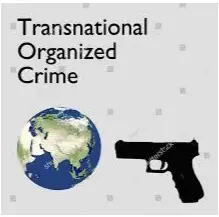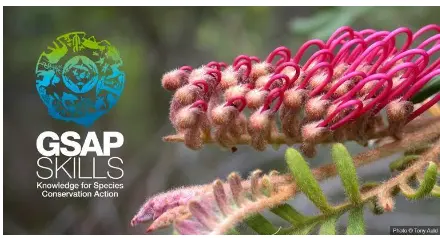Monday, 27th May 2024
US Federal Reserve's Interest Rates and Inflation Measures
In News: The US Federal Reserve has opted to keep interest rates within a target range of 5.25% to 5.5% and signalled a probable continuation of elevated borrowing expenses.

Reasons Behind the Recent US Federal Reserve Decision
- Inflationary Pressures
- The US Federal Reserve's decision stems from persistent inflation rates, which have remained above the target of 2%.
- Despite previous measures such as interest rate hikes, inflation remains stubbornly high at 3.5%.
- The Wait-and-See Approach
- Initially, the Fed anticipated a decline in inflation and projected rate cuts. However, the current situation has prompted a reconsideration.
- By maintaining rates, the Fed aims to gather more data, closely monitoring inflation metrics, employment figures, and consumer spending patterns to inform future decisions.
How do US Fed Rates Impact the Indian Economy?
- Capital Outflows
- Rate hikes by the US Fed make US dollar-denominated assets more attractive, leading to capital outflows from countries like India.
- This can slow economic growth and affect stock markets.
- Inflation
- Changes in US Fed rates influence capital flows and exchange rates, potentially leading to inflation.
- The Reserve Bank of India can adjust domestic interest rates and liquidity measures to mitigate inflationary impacts.
- Weaker Rupee
- Capital flight due to higher US returns weakens the Indian rupee, causing imported inflation but potentially boosting exports.
- Higher Borrowing Costs
- The RBI might raise interest rates to match the Fed's move, aiming to control inflation and stem capital flight.
- Stock Market Fluctuations
- Reduced foreign investment can decrease demand for Indian stocks, leading to price declines.
- Increased Debt Burden
- A weaker rupee can raise the cost of servicing external debt, impacting public finances.
- Benefits for Banks
- Banks benefit from interest rate hikes as they re-price their loan portfolios, increasing net interest margins.
How can India Reduce the Impact of the US Federal Reserve Decisions on its Economy?
- Balancing Interest Rates
- The RBI can raise rates to attract foreign investment and control inflation.
- Diversifying the Reserve Basket
- India can reduce dependence on the US dollar by increasing holdings of other major currencies.
- Expanding Trade Horizons
- Exploring new export markets and negotiating trade agreements can reduce reliance on the US market.
- Stimulating Domestic Consumption
- Tax cuts and subsidies for essential goods can boost domestic demand.
- Reducing Reliance on Oil
- Investing in renewables and exploring biofuels can reduce dependence on imported oil.
|
UPSC Previous Year Questions Prelims (2021) Q. Indian Government Bond Yields are influenced by which of the following?
Select the correct answer using the code given below. (a) 1 and 2 only (b) 2 only (c) 3 only (d) 1, 2 and 3 Ans: (d) Prelims (2022) Q. Consider the following statements:
Which of the statements given above are correct? (a) 1, 2 and 3 (b) 1 and 2 only (c) 2 and 3 only (d) 1, 2 and 3 Ans: (b) Mains (2019) Q. Do you agree with the view that steady GDP growth and low inflation have left the Indian economy in good shape? Give reasons in support of your arguments. |
Source: IE
Impact of Wind Shear on Hurricanes
In News: Recently, there has been a growing focus on the concept of wind shear due to its pivotal role in determining whether a storm intensifies into a destructive hurricane.

Understanding Wind Shear
- Definition: Wind shear is a meteorological phenomenon characterized by a sudden change in wind speed and/or direction over a relatively short distance.
- Types
- Vertical Wind Shear: This occurs when there is a rapid change in wind speed and/or direction with increasing altitude. Examples include low-level jet streams and wind shear associated with thunderstorms.
- Horizontal Wind Shear: This phenomenon involves rapid changes in wind speed and/or direction over a horizontal distance. For instance, the wind may shift from west to north within a short distance. Common examples include frontal systems and sea breezes.
- Major Causes
- Temperature Inversion: During calm nights, warm air near the ground traps cooler air above, creating strong vertical wind shear that poses a hazard for aircraft.
- Thunderstorms: Updrafts and downdrafts within thunderstorms cause both horizontal and vertical wind shear, making flying near them perilous.
- Frontal Systems: Boundaries between warm and cold air masses create rapid changes in wind speed and direction, resulting in horizontal wind shear challenging for aircraft navigation.
- Detection Methods
- Low-Level Wind Shear Alert System (LLWAS): Utilizes ground-based towers with anemometers and wind direction sensors to measure wind conditions around airports.
- Doppler Radar: Tracks wind speed and direction on the ground to identify wind shear zones.
- LIDAR: Uses light to detect wind shear, particularly beneficial for detecting clear air turbulence.
Effects of Wind Shear on Hurricanes
- Understanding Hurricanes: Hurricanes, or tropical cyclones, are violent storms originating over oceans in tropical regions and causing widespread destruction through strong winds, heavy rainfall, and storm surges.
- Impact of Wind Shear
- Hurricanes thrive in environments with minimal vertical wind shear, as it allows for a symmetrical structure and efficient rotation.
- Strong vertical wind shear disrupts the hurricane's vertical structure, weakening wind circulation, heat transport, and moisture supply essential for fueling the storm.
- Excessive wind shear can potentially tear a hurricane apart.
- Other Factors Affecting Hurricane Intensity
- While vertical wind shear is significant, factors such as sea surface temperatures, atmospheric moisture content, and pressure systems also influence hurricane development and strengthening.
- Exceptionally warm sea surface temperatures can sometimes offset the effects of increased wind shear, as observed during the 2023 hurricane season.
Influence of El Nino and La Nina on Wind Shear
- El Nino's Influence
- During El Nino years, stronger-than-usual vertical wind shear is typically observed over the Atlantic Ocean during hurricane season.
- El Nino events are characterized by warmer sea surface temperatures in the eastern Pacific and cooler temperatures in the western Pacific, leading to stronger upper-level winds over the Atlantic and increased wind shear.
- This increased wind shear makes it more challenging for hurricanes to develop and intensify in the Atlantic basin.
- La Nina's Influence
- Conversely, La Nina conditions are more favorable for hurricane development in the Atlantic.
- During La Nina years, vertical wind shear is generally weaker over the Atlantic, leading to more active hurricane seasons.
- The record-breaking 2020 Atlantic hurricane season occurred during a La Nina event.
|
UPSC Previous Year Questions Prelims (2015) Q. In the South Atlantic and South-Eastern Pacific regions in tropical latitudes, cyclones do not originate. What is the reason? (a) Sea surface temperatures are low (b) Inter-Tropical Convergence Zone seldom occurs (c) Coriolis force is too weak (d) Absence of land in those regions Ans: (b) Prelims (2019) Q. In the context of which of the following do some scientists suggest the use of cirrus cloud thinning technique and the injection of sulfate aerosol into the stratosphere? (a) Creating the artificial rains in some regions (b) Reducing the frequency and intensity of tropical cyclones (c) Reducing the adverse effects of solar wind on the Earth (d) Reducing the global warming Ans: (d) Prelims (2020) Q. Consider the following statements:
Which of the statements given above is/are correct? (a) 1 only (b) 2 and 3 only (c) 2 only (d) 1 and 3 only Ans: (c) |
Source: DTE
Transnational Organised Crime
In News: The leaders of the Financial Action Task Force (FATF), Interpol, and the United Nations Office on Drugs and Crime (UNODC) have underscored the immediate necessity to escalate endeavours aimed at combating the substantial illicit proceeds produced by transnational organized crime (TOC).

Understanding Transnational Organized Crime
- Definition and Scope
- Transnational organized crime (TOC) refers to illegal activities orchestrated by groups or networks operating across multiple countries, often involving violence, corruption, and financial gain.
- Various Forms
- Money Laundering: Criminals conceal illicit funds, estimated globally at 2% to 5% of GDP, to appear legitimate.
- Drug Trafficking: Valued at USD 650 billion globally, drug trade remains a significant criminal enterprise.
- Human Trafficking: Involves exploitation for profit, victimizing millions with annual profits estimated at USD 150 billion.
- Migrant Smuggling: Generated USD 6.6 billion in 2009, facilitating illegal movement across borders.
- Illicit Firearms Trafficking: Annual revenue estimated between USD 170 to 320 million, fueling violent crime.
- Natural Resource Trafficking: Encompasses illegal trade in minerals, wildlife, forestry, and fishery products, with significant environmental impacts.
- Fraudulent Medicines: Counterfeit medicines endanger lives and contribute to an estimated 1 million deaths annually.
- Cybercrime and Identity Theft: Exploitation of the internet for illegal gains, including data theft and financial fraud.
Impacts of Transnational Organized Crime
- Public Health: Counterfeit medicines contribute to over 1 million deaths annually, with a significant impact in Africa.
- Economic Resilience: Illicit financial flows undermine financial integrity and economic stability, draining foreign exchange reserves.
- Environmental Degradation: Organized environmental crime drives deforestation, biodiversity loss, and contributes to climate change.
- Peace and Security: Illicit arms trade fuels armed conflicts and violence, particularly in regions like Central and South America.
- Local Effects: Destabilizes countries, increases corruption and violence, and strains public resources.
Significance of Targeting Illicit Profits
- Alignment with Development Goals: Targeting illicit profits supports sustainable development goals, promoting financial stability and inclusive growth.
- Disruption of Criminal Activities: By cutting off funds, it becomes harder for criminals to sustain their networks and fund other illegal activities.
- Rule of Law Promotion: Confiscating illicit profits reinforces the rule of law and discourages criminal behavior.
- Economic Development: Redirecting illicit funds towards legitimate purposes can stimulate economic growth.
- Enhanced Security: Targeting illicit profits helps combat money laundering and terrorism financing, contributing to global security.
- Protection of Vulnerable Populations: Many criminal activities financed by illicit profits exploit vulnerable populations, making it crucial to target these funds.
- Encouragement of International Cooperation: Targeting illicit profits fosters collaboration among nations in combating transnational organized crime.
Challenges in Controlling TOC
- Legal Complexity: Diverse legal systems complicate international efforts to combat TOC.
- Lack of Consensus: Varying national interests hinder global consensus on strategies to address TOC.
- Corruption: TOC often involves corruption, undermining law enforcement efforts.
- Technological Advancements: Criminals exploit technology for illicit activities, staying ahead of law enforcement.
- Armed Conflict: TOC fuels violence and instability in conflict regions, complicating control efforts.
Strategies for Progress:
- Blockchain Forensics: Utilize blockchain technology to track illicit cryptocurrency flows.
- Dark Web Infiltration: Develop units to navigate the dark web and gather intelligence on TOC operations.
- Transparency Initiatives: Promote transparency measures in government institutions to reduce opportunities for corruption.
- Political Will: Foster international cooperation through multilateral instruments and political commitment.
- Real-Time Fusion Centers: Establish centers for immediate collaboration between law enforcement and intelligence agencies for coordinated responses to organized crime.
|
UPSC Previous Year Questions Prelims (2021) Q. Consider the following statements:
Which of the statements given above are correct? (a) 1 and 3 only Ans: (c) Mains (2018) Q. India’s proximity to two of the world’s biggest illicit opium-growing states has enhanced her internal security concerns. Explain the linkages between drug trafficking and other illicit activities such as gunrunning, money laundering and human trafficking. What counter-measures should be taken to prevent the same? |
Source: TH
Space Tourism
In News: Gopi Thotakura, an Indian-born commercial pilot residing in the United States, achieved the distinction of being the inaugural space tourist from India.

Challenges to Space Tourism
- Environmental Impact: Spacecraft launches generate significant air and noise pollution, contributing to climate change and harming the atmosphere.
- Safety Concerns: Despite safety protocols, mishaps during space tourism ventures could have catastrophic consequences.
- Cost Barrier: Space tourism is currently accessible only to the wealthy due to its high cost, leading to feelings of inequality and elitism among the general population.
- Space Debris: Each launch contributes to space debris, posing risks to other spacecraft and increasing the potential for damage.
- Resource Depletion: Space travel requires vast amounts of resources, potentially leading to long-term environmental consequences and resource scarcity for future generations.
- Legal Issues: The legal framework for space tourism is still evolving, leading to uncertainty regarding liability and adherence to international space laws.
Opportunities for India in the Space Tourism Sector
- Leveraging ISRO's Expertise: India can utilize ISRO's successful track record in space missions, such as the Mars Orbiter Mission, to inspire confidence in future human space endeavors.
- Public-Private Space Partnership: India's encouragement of private participation in the space sector, along with initiatives like New Space India Limited (NSIL) and supportive policies, can attract investments and drive innovation.
- Future Plans: ISRO's development of a reusable space tourism module, expected to launch by 2030 at a cost of Rs 6 crore per trip, presents an opportunity for India to enter the commercial space tourism market.
Future of Space Tourism
- Accessibility: ISRO predicts that by 2030, space tourism will become accessible to the wealthy with an average ticket cost of around 6 crores, potentially opening up opportunities for a broader range of participants.
- Beyond Earth's Orbit: Companies are expanding their focus from suborbital and orbital flights to lunar adventures and deep space exploration, with missions to Mars and beyond.
- Space Staycations: Space tourism concepts are evolving to include longer stays in space modules, allowing tourists to experience extended periods beyond Earth's atmosphere.
- Sustainability: There is a growing emphasis on developing fully reusable rockets to minimize space debris and make space travel more environmentally friendly.
|
UPSC Previous Year Questions Prelims (2010) Q. 1 In the context of space technology, what is “Bhuvan”, recently in the news? (a) A mini satellite launched by ISRO for promoting the distance education in India Ans: (c) Mains (2023) Q.1 What is the main task of India’s third mood mission which could not be achieved in its earlier mission? List the countries that have achieved this task. Introduce the subsystems in the spacecraft launched and explain the role of the ‘Virtual Launch Control Centre’ at the Vikram Sarabhai Space Centre which contributed to the successful launch from Sriharikota. Mains (2019) Q.2 What is India’s plan to have its own space station and how will it benefit our space programme? Mains (2016) Q.3 Discuss India’s achievements in the field of Space Science and Technology. How the application of this technology helped India in its socio-economic development? |
Source: IE
Joint Parliamentary Committees
In News: The main opposition party in India has proposed the establishment of a Joint Parliamentary Committee (JPC) to probe allegations that the Adani Group sold substandard coal to a state-owned company in Tamil Nadu, misrepresenting its quality.
Understanding Joint Parliamentary Committees (JPCs)
- JPCs are ad-hoc Committees established by Parliament to conduct thorough examinations of specific subjects or Bills.
- They comprise members from both Houses and from ruling and opposition parties, chaired by a Lok Sabha member appointed by the Speaker.
- The composition of JPCs is determined by Parliament without a set limit on the number of members.
- Upon completing their term or task, JPCs are dissolved.
- While the committee's recommendations are advisory and not binding on the government, suggestions from committees with a majority of MPs and heads from the ruling party are often accepted.
- JPCs have the authority to gather evidence from experts, public bodies, associations, individuals, or interested parties either proactively or in response to requests.
- Examples of cases in which JPCs were formed include the Bofors scandal (1987), the Harshad Mehta stock market scam (1992), the Ketan Parekh share market scam (2001), the National Register of Citizens (NRC, 2016), and the Personal Data Protection Bill (2019).
Source: TH
Peroxide Chemicals
In News: A chemical explosion in a Thane-based factory in Maharashtra resulted in 11 fatalities, shedding light on significant safety deficiencies. The explosion, caused by reactive peroxide chemicals, prompted legal action, with the accused facing charges under both the Explosive Act of 1884 and the Explosive Substances Act of 1908.

Regulation of Explosives and Peroxide Chemicals
- The Explosives Act of 1884, enacted by the British colonial government in India, governs the manufacturing, storage, possession, use, sale, import, and export of explosives, aiming to ensure safety standards in handling, transportation, and storage to prevent accidents.
- The Explosive Substances Act of 1908 defines explosive substances and special category explosive substances, such as RDX, and outlines punishments for causing explosions endangering life or property, as well as penalties for attempts to cause explosions or possession of explosives with malicious intent.
- Peroxide chemicals are organic compounds containing a peroxide functional group, characterized by two oxygen atoms linked together, typically represented as R−O−O−R, where ‘R’ can represent any element, with the linkage known as the peroxide group or peroxy group.
- Examples of peroxide chemicals include hydrogen peroxide and benzoyl peroxide, known for their reactivity due to the weak bond in peroxides, making them susceptible to alteration in structure by other chemicals.
- Peroxides pose hazards, potentially causing fires and explosions upon exposure to heat, shock, or friction.
Source: HT
Advertising Standards Council of India
In News: In a recent development, the Advertising Standards Council of India (ASCI) has addressed complaints concerning 101 advertisements that feature celebrities.
Overview of the Advertising Standards Council of India (ASCI)
- The ASCI is a voluntary self-regulatory organization within India's advertising industry.
- Established in 1985, it operates as a non-profit company registered under Section 25 of the Company Act.
- Its membership comprises professionals from marketing, creative, media, and related sectors in India.
- The ASCI is dedicated to promoting self-regulation in advertising to safeguard consumer interests.
Purpose and Functions
- The ASCI code aims to regulate advertising content, ensuring it does not unduly offend certain segments of the population while still promoting products effectively.
- It enforces its Code for Self-Regulation, requiring advertisements to be legal, decent, honest, truthful, and not hazardous or harmful, while also promoting fair competition.
- The ASCI investigates complaints across various media platforms, including print, TV, radio, hoardings, SMS, emailers, internet/website, product packaging, brochures, promotional material, and point-of-sale materials.
International Affiliation
- The ASCI holds a position on the Executive Committee of the International Council on Ad Self-Regulation (ICAS), reflecting its involvement in global advertising self-regulation initiatives.
Source: TP
GSAP SKILLS Platform
In News: The GSAP SKILLS Platform was recently unveiled at the Fourth meeting of the Subsidiary Body on Implementation, Convention on Biological Diversity.

Overview of the GSAP SKILLS Platform
- The Global Species Action Plan (GSAP) Species Conservation Knowledge, Information, Learning, Leverage, and Sharing (SKILLS) platform digitizes GSAP's content, facilitating real-time updates of technical tools and resources.
- Its primary objective is to foster global collaboration and partnership by connecting decision-makers, species conservation practitioners, and experts across all levels.
- The platform offers instantaneous updates on technical tools and resources, ensuring their accessibility and relevance to users.
- Each target outlined in the Global Biodiversity Framework includes a concise summary and rationale for species conservation interventions, actions, sub-actions, actors, and technical tools and resources, facilitating the scaling-up of implementation efforts.
- Managed proactively by the International Union for Conservation of Nature (IUCN), the platform responds to governmental and stakeholder needs for effective species conservation actions.
- The development of the GSAP SKILLS platform has received primary support from the Ministry of Environment, Republic of Korea, with additional resources contributed by the Tech4Nature Initiative launched by IUCN and Huawei in 2020.
Understanding the Global Species Action Plan
- The Global Species Action Plan (GSAP) has been formulated to bolster the implementation of the Kunming-Montreal Global Biodiversity Framework (GBF) and counteract the escalating biodiversity loss globally.
- It delineates strategic interventions and actions aimed at conserving and sustainably managing species while ensuring equitable benefits for all stakeholders.
Source: IUCN
Mount Ibu
In News: In a recent event, Mount Ibu experienced another eruption, propelling ash up to a height of 4 kilometers, while streaks of purple lightning illuminated the area around its crater.

Overview of Mount Ibu
- Mount Ibu is an active stratovolcano situated along the northwest coast of Halmahera Island in Indonesia.
- Its volcanic activities are part of a series of eruptions occurring in Indonesia, a country known for its 127 active volcanoes, situated within the Pacific "Ring of Fire."
Understanding Stratovolcanoes
- A stratovolcano, also known as a composite volcano, is a volcanic landform characterized by its conical shape, formed by layers of volcanic material deposited during successive eruptions.
- These volcanoes typically have a gentle slope at the base but rise steeply near the summit, forming tall mountain peaks.
- They are commonly found above subduction zones and are often part of large volcanic regions, such as the Ring of Fire encircling much of the Pacific Ocean.
- Stratovolcanoes are built up in height through the layering of lava, ash, and tephra, featuring alternating layers of pyroclastic material and lava.
- Examples of stratovolcanoes include the Nevado del Ruiz Volcano and the Ubinas Volcano, both located in the Andes Mountains of Colombia.
Source: HT
The Economic Impact of Climate Change
In News: A recent article discusses the increasing economic consequences of climate change and emphasizes the necessity for both mitigation and adaptation efforts.
Major Impacts of Climate Change on the Indian Economy
- Reduced Agricultural Productivity and Yield
- Climate change disrupts crop cycles and lowers agricultural yield, affecting the livelihoods of around 55% of India’s population.
- This leads to economic repercussions, including inflation in urban areas.
- Setback to Industrial and Service Sector
- Increased operational costs and reduced profits in industries result from climate-friendly regulations, diversion of investments to greener infrastructure, and relocation of production due to climate-related losses.
- The service sector faces threats like increased insurance claims and disruptions in travel and hospitality.
- Infrastructure Damage
- Extreme weather events like floods and heatwaves cause significant damage to infrastructure, resulting in economic losses.
- India has already experienced considerable economic damage, with USD 3 billion spent on flood-related damages in the last decade.
- Labor Market Impacts
- Climate-induced health hazards decrease productivity and prompt migration from climate-vulnerable areas.
- The Reserve Bank of India predicts a potential 4.5% loss in GDP by 2030 due to lost labor hours from extreme heat and humidity, with India possibly accounting for a substantial portion of global job losses from heat stress.
- Risks for Banks and Financial Institutions
- Climate change poses risks classified into physical risks (extreme weather events) and transition risks (credit, market, liquidity, operational, and reputational risks) for banks and financial institutions.
- These risks can have direct and indirect effects on the economy.
- Impacts on High-Emission Industries
- Industries such as electricity production, transportation, and mining emit significant greenhouse gases.
- Around 40% of India's current annual carbon emissions could be addressed by transitioning to renewables and electric vehicles.
- However, hard-to-abate sectors like heavy industries pose challenges.
Measures to Mitigate the Impacts of Climate Change on the Indian Economy:
- Exploring Industrial Symbiosis
- India should promote circular economy models, incentivizing companies to minimize waste and reuse materials.
- Industrial symbiosis, where waste from one industry becomes another's raw material, can be encouraged.
- Fostering Public-Private Partnerships for Green Innovation
- Public-private partnerships can accelerate the development and deployment of green technologies.
- Establishing funds or incubators to support startups working on climate-friendly technologies is crucial.
- Promoting Climate-Conscious Urban Planning
- Prioritizing climate-conscious urban planning can create sustainable and resilient cities.
- Integrating climate change adaptation and mitigation measures into initiatives like the Smart Cities Mission is essential.
- Developing Climate-Resilient Special Economic Zones (SEZs)
- Creating SEZs that prioritize sustainability and green infrastructure can attract businesses committed to reducing their carbon footprint.
- Establishing a National Green Taxonomy
- A national green taxonomy can guide investments and policy interventions toward environmentally sustainable economic activities.
- Utilizing Green Bond Financing for Infrastructure
- Issuing sovereign green bonds can attract capital for building climate-resilient infrastructure, such as flood-resistant embankments and renewable energy projects.
|
UPSC Previous Year Questions Prelims (2021) Q. In the context of India’s preparation for Climate-Smart Agriculture, consider the following statements:
Which of the statements given above are correct? (a) 1 and 2 only (b) 2 and 3 only (c) 1 and 3 only (d) 1, 2 and 3 Ans: (d) Prelims (2016) Q.2 Which of the following best describes/describe the aim of ‘Green India Mission’ of the Government of India?
Select the correct answer using the code given below. (a) 1 only (b) 2 and 3 only (c) 3 only (d) 1, 2 and 3 Ans: (c) Prelims (2017) Q.3 With reference to ‘Global Climate Change Alliance’, which of the following statements is/are correct?
Select the correct answer using the code given below: (a) 1 and 2 only (b) 3 only (c) 2 and 3 only (d) 1, 2 and 3 Ans: (a) Mains (2021) Q.1 Describe the major outcomes of the 26th session of the Conference of the Parties (COP) to the United Nations Framework Convention on Climate Change (UNFCCC). What are the commitments made by India in this conference? Mains (2017) Q.2 ‘Climate Change’ is a global problem. How will India be affected by climate change? How Himalayan and coastal states of India be affected by climate change? |
Source: IE
Share the article
Edukemy’s Current Affairs Quiz is published with multiple choice questions for UPSC exams
MCQ
Get Latest Updates on Offers, Event dates, and free Mentorship sessions.

Get in touch with our Expert Academic Counsellors 👋
FAQs
UPSC Daily Current Affairs focuses on learning current events on a daily basis. An aspirant needs to study regular and updated information about current events, news, and relevant topics that are important for UPSC aspirants. It covers national and international affairs, government policies, socio-economic issues, science and technology advancements, and more.
UPSC Daily Current Affairs provides aspirants with a concise and comprehensive overview of the latest happenings and developments across various fields. It helps aspirants stay updated with current affairs and provides them with valuable insights and analysis, which are essential for answering questions in the UPSC examinations. It enhances their knowledge, analytical skills, and ability to connect current affairs with the UPSC syllabus.
UPSC Daily Current Affairs covers a wide range of topics, including politics, economics, science and technology, environment, social issues, governance, international relations, and more. It offers news summaries, in-depth analyses, editorials, opinion pieces, and relevant study materials. It also provides practice questions and quizzes to help aspirants test their understanding of current affairs.
Edukemy's UPSC Daily Current Affairs can be accessed through:
- UPSC Daily Current Affairs can be accessed through Current Affairs tab at the top of the Main Page of Edukemy.
- Edukemy Mobile app: The Daily Current Affairs can also be access through Edukemy Mobile App.
- Social media: Follow Edukemy’s official social media accounts or pages that provide UPSC Daily Current Affairs updates, including Facebook, Twitter, or Telegram channels.





